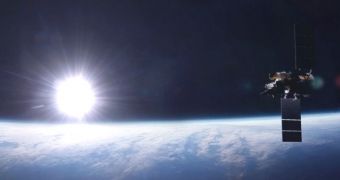The American space agency is currently finalizing preparations for the launch of its newest satellite, the Earth-observing spacecraft Glory. The mission is now scheduled to take-off on February 23, at 5:09 am EST, from the US West Coast.
Glory will be flown to orbit aboard a Taurus XL 3110 delivery system, which was produced by Virginia-based Orbital Sciences Corporation (OSC). Blast off will take place from the Vandenberg Air Force Base (VAFB), in California.
After it reaches orbit, and successfully completes the verification and validation stages of its flight, the spacecraft will join the Afternoon Constellation or “A-Train” of satellites, which fly in a pack minutes after each other, surveying various aspects of our planet.
Members of the A-Train analyze soil moisture, ocean salinity, aerosol concentrations, air quality, clouds and other such traits. Because they fly close to each other, the spacecraft provide climate experts with a comprehensive view of the atmosphere at a given time.
Once it joins the satellite constellation, Glory will provide NASA with a better understanding of how the Sun and aerosols (tiny particles in the atmosphere) affect Earth's global climate.
“Glory is going to help scientists tackle one of the major uncertainties in climate change predictions identified by the United Nation's Intergovernmental Panel on Climate Change: the influence of aerosols on the energy balance of our planet,” Michael Freilich explains.
“This mission also marks the first satellite launch under President Obama's climate initiative that will advance the United States' contribution to cutting-edge and policy-relevant climate change science,” he goes on to say.
The expert is the director of the NASA Earth Science Division, at the NASA Headquarters Science Mission Directorate (SMD), in Washington, DC. He says that the concept for the Glory mission was at proposed for the first time in 2005.
OSC delivered the satellite to the VAFB on January 11, and the spacecraft was then put through a large number of tests to assess its fligh-readiness.
“The spacecraft is in place at the launch and all of the post-shipment inspections and electrical tests have been completed,” explains NASA Goddard Space Flight Center (GSFC) Glory project manager Bryan Fafaul.
“Glory will carry new technology designed to unravel some of the most complex elements of the Earth system. The mission carries two primary instruments, the Aerosol Polarimetry Sensor (APS) and the Total Irradiance Monitor (TIM),” NASA says in a press release.

 14 DAY TRIAL //
14 DAY TRIAL //